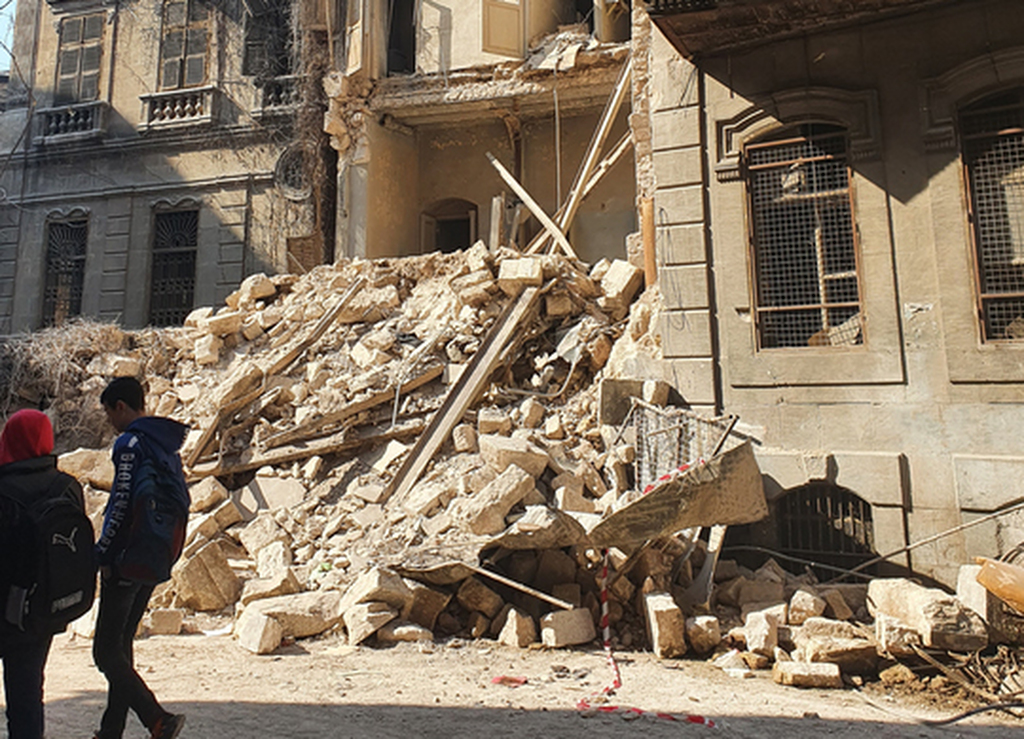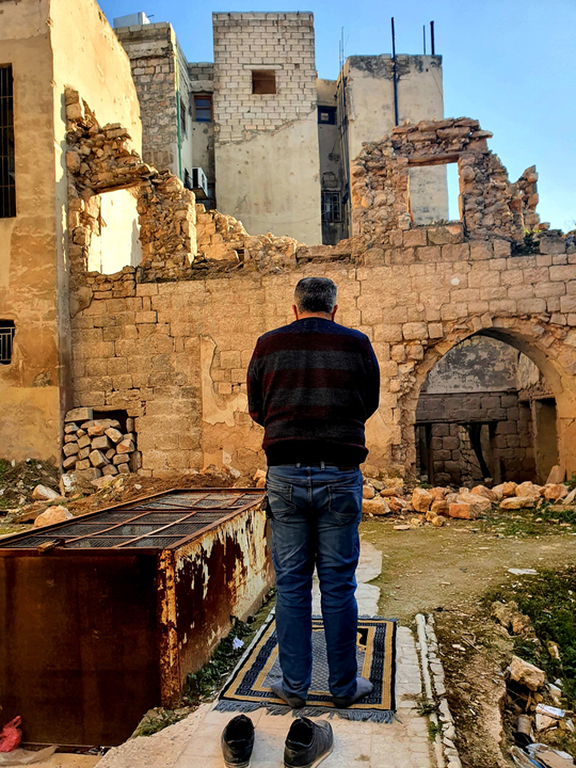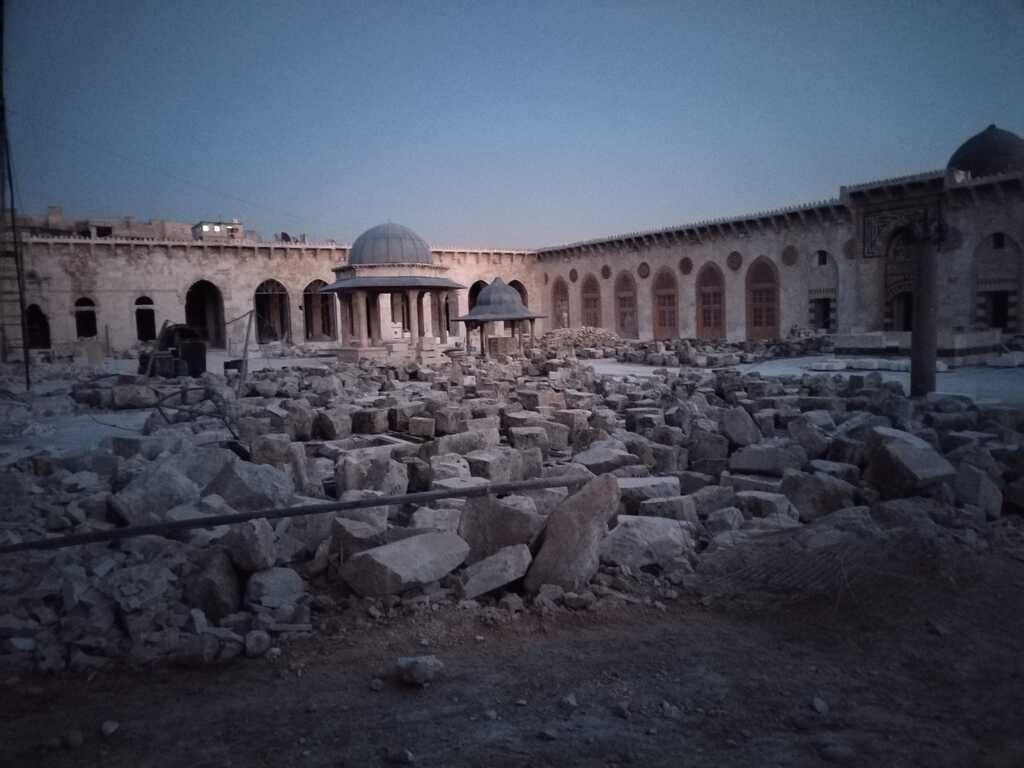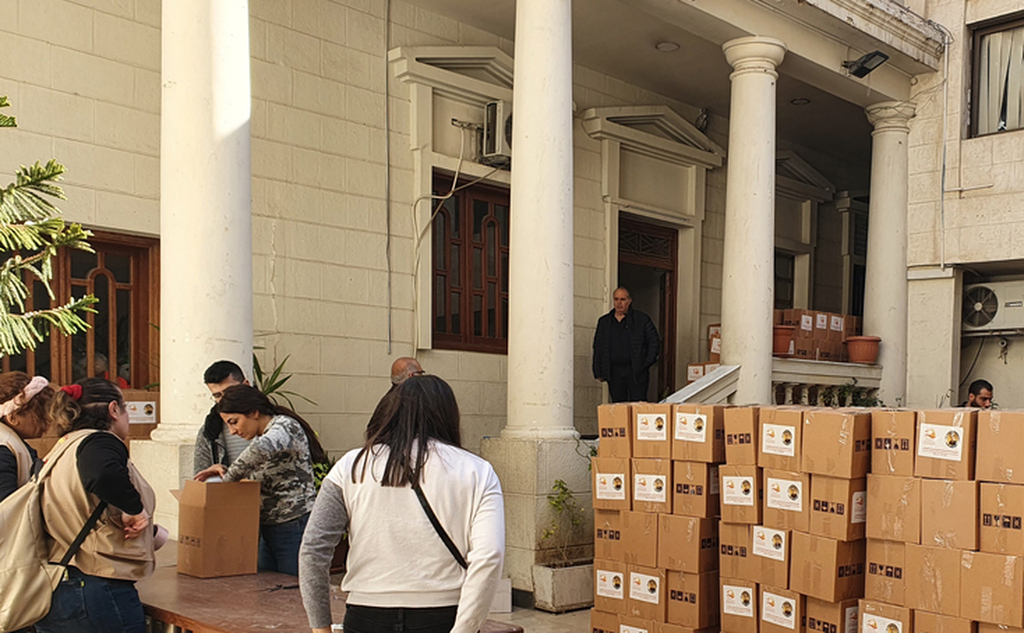A month ago, a devastating earthquake struck Turkey and Syria. Already in the early hours after the earthquake Sant'Egidio made an appeal to send aid - which many generously responded to - and at the same time strongly called for sanctions to be lifted and for channels to be opened so that the aid could reach the affected populations.
In the past few weeks, a delegation travelled to the affected areas to bring emergency aid and plan other long-term interventions. Their account, with pictures of the terrible destruction and the delivery of the first aid, helps us not to forget, rather to better understand the extent of this disaster and the need to further solidarity action.
A month ago: the earthquake. The Community of Sant'Egidio’s appeal to ease the embargo at least for humanitarian aid. The first easing of the sanctions - the Caesar Act - by the United States. Visa. February 15 we left via Beirut and arrived in Damascus the next day. We met the nuncio, Cardinal Mario Zenari, who was already at work on national coordination and establishing a direct channel to receive donations and aid, in collaboration with the Red Crescent, directly and through the Churches, NGOs and religious congregations that have never left Syria. Then the journey to Aleppo. We were able through this network, immediately, to see the places and get aid to the most neglected areas. The earthquake added to war destruction: the difference is between dark rubble and light, fresh rubble from more recently collapsed building.
In the emergency aid: blankets, mats, medicines, baby formula, money to rent undamaged houses in order to not sleep outside. Yet it is hard to differentiate between those who have suffered from the earthquake now and those who have already faced the earthquake of war, because 90 percent of the population does not have enough to eat and to keep warm. There have also been 50,000 cases of cholera, because in many areas the water is no longer drinkable, pipes are damaged, purification and filtration are major works, and the embargo prevents many interventions.
Water for agriculture also has to be purified, and so where people have resumed cultivating fields, only 30 percent of the normal production is possible. Seed oil, gas cylinders, and petrol cans are the most valuable and most expensive commodity. Before and after crossing the border between Lebanon and Syria, motorcycles and pickup trucks are constantly transporting these goods. They are bought in Lebanon at sky-high prices, and resold in Syria at even higher prices. Fuel is scarce and so expensive due to inflation in Lebanon that since the Christmas holidays, schools have not reopened. Inflation and prices are beyond imagination in Siria. People do not know how to live. How to survive. Still, as in all wars and embargoes in contemporary history, if the victim is the general population, there are also those, perhaps 5-10 percent, who are living well or thriving.
There is a great deal of resignation. It is impossible to live in Syria. Indeed the possibility of living there must also be rebuilt, to prevent many – especially those who are studying - from wishing they could leave. But there is also resilience. We visited the L’Arche centre, which has never closed, as well as the "top of the art" centres of Aaamal, the Syrian nonprofit that has built effective centres for specialised help to people with autism spectrum and hearing disorders, in Damascus, Aleppo and Latakia. They were full of children and young people and their mothers, involved in therapy. Two spaces of humanity that give a glimpse of a possible future.
From Damascus to Aleppo, 349 kilometres. There is no way to describe it. Both of us, Mauro Garofalo and Mario Marazziti, can only say, "We had never seen it or even imagined anything like this: a 4-hour car journey and only destroyed buildings, villages, city suburbs, left and right. Our eyes were longing for something alive, something different, but only unending skeletons of the life that once was."
Syria has been held hostage to violence for 12 years now. It is a symbol of an endless war. The accurate numbers of this enormous tragedy, which has claimed the lives of 700,000 people, caused 7 million internally displaced persons and 6 million refugees outside the country, are not even known. In 2011 Syria had a population of 22 million, now it has 15 million, more than half - 9 million people - are dependent on government aid. Meanwhile, no humanitarian aid has been distributed so far due to international sanctions. The Community and other groups have called for them to be suspended in order to meet the needs of an exhausted population. Life will also need to be rebuilt sooner or later.
Even in central Damascus, electricity is only available for two, sometimes three hours a day. But big cities are and remain big cities with bombed-out, destroyed peripheries.
Aleppo has more wounds, in the old centre because of the long-lasting siege and the front line inside the city. Many children and men collect plastic among the rubbish, and the poor are left homeless in the maze of alleys in the centre, whose elegant buildings are often destroyed or no longer habitable. Our Sant'Egidio delegation delivered the aid - collected this month- to displaced families housed in the Franciscans' Pro Terra Sancta boarding school in Aleppo. We participated in the pan-Syrian humanitarian aid coordination meeting with several representatives of Christian Churches, including Card. Mario Zenari, Apostolic Nuncio in Syria, Msgr. Claudio Gugerotti, Prefect of the Dicastery of Eastern Churches, and Msgr. Boutros Marayati, Armenian Catholic Archbishop of Aleppo. Through the Franciscans, the Apostolic Administrator Raymond Girgis, and Father Hannah Jallouf, aid has been delivered to the Aleppo area and to the most unreachable areas in the north under government control, to Knaye and the other two villages with a Christian presence in the Orontes Valley, where no aid had been delivered, yet. Other aid has been distributed directly through the Maronite Church in Latakia. We can be more direct and rapid through this network; projects and channels of intervention are very direct through the nunciature.
At the end of the visit, our Sant’Egidio delegation went to Maalula, the ancient city north of Damascus, where Aramaic, the language of Jesus, is still spoken, and where the oldest Christian altar in the world is preserved in the church of St. Sergius and Bacchus. Below, in the monastery of St. Thecla, the remains of St. Paul's disciple are venerated. The only remaining priest and nuns, some of whom were kidnapped by jihadists but survived, showed us the signs of the war destruction, which did not spare even the icons. The altar itself was found broken and then rebuilt. They knew that the friendship of Sant’Egidio has never abandoned them for all these years, nor have our prayers for peace. The Humanitarian Corridors gave hope, not in order to flee, but to not lose humanity and keep hope alive for rebirth. We have just begun.”
Mario Marazziti
Mauro Garofalo
Emergency aid and a solidarity network to rebuild sustainable living conditions in Syria

















.jpeg)

